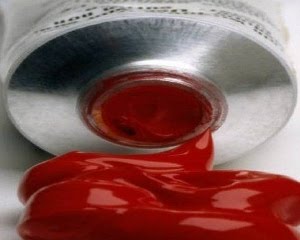Five Tips to
Becoming a Better Photographer
By: Robert Davila
Professor of
Photography
I think one of the most important tools that any artist
could have is their camera. It is a
great way to have references to work from and now with Illustrator CS6 live
trace can replicate and image to vector drawing, better than ever before. Which than can be modified to fit your
artistic style. However not being able
to fully understand your camera setting can leave you upset and frustrated to
the point that you just don’t use it.
The myth that you need an expensive camera to take good picture is not
true. However having an expensive camera
gives you more choices which in hand give you more control. But the camera does not make the
photographer.
I have created five tips that can help you become a better
photographer. Each week for the next
five weeks, I will discuss a tip. It
does not really matter if you are using a Digital SLR or just a point in
shoot. As an instructor of photography I
found these five tips to be the foundation in which most of my students build
and refine their skills.
Tip Number
One: Understanding Exposure
I don’t care which camera or model you have, even if you are
using your I Phone camera. All cameras
have two settings. These two setting are
the basis for photographing. Aperture
works similar to the pupil in your eyes.
In darker lighting situation it needs to be open more and in lighter
situation it needs to be closed down.
This Setting controls not only exposure but depth of field. How much of the image is going to be in
focus. A limited depth of field (small
amount of the image in focus) is created when the aperture is open up (F 2). An increase depth of field is created when
the aperture is closed down (f 22). The
other setting that is important to a camera is the shutter speed. This is done for the most part in a fraction
of a second. When your camera reads out
500 for a shutter speed it means that that shutter open and closed 500th
of a second. That is pretty fast. A Guide line to follow is that if shooting
anything less than 1/60, you are going to need a tripod. The shutter speed is going to control motion
in your image. If you are going to take
picture and want the motion to be blurry, you are going to photograph with a
slower shutter speed. Want your moving
subject to be sharp, use a faster shutter speed.
Determining your right exposure will be base in how you
meter the light. You must read your
manual to understand how to get the “right” exposure. But keep in mind once you have figure out
your correct setting you can adjust them as needed. For example you might want to us a slower
shutter speed than suggested. By
increase the time that light will enter the camera you can use you aperture to
cut down the amount of light coming in.
So if you allow more time on one end you close down on the other
end. You will than see your meter
reading that is “right “again. Think of
it as a faucet filling a bucket. If you
open the facet all the way you will fill that bucket quicker than if you slow
it down. At the end you could have both
buckets filled, just one will take longer.
Next week, I will discuss Tip Number Two. Have a great weekend and take some
photographs.
Published by Contemporary Art Gallery Online


















